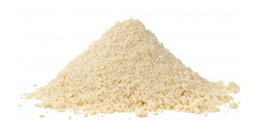
Millet is an excellent source of iron and magnesium. It is also high in calcium, phosphorous, manganese, zinc, and B vitamins. It has the highest iron content of any grain except amaranth and quinoa. The natural alkalinity of millet makes it easily digestible, so it is very beneficial for people with ulcers and digestive problems. It is believed to be one of the least allergenic of all grains.
Recognized as gluten free in Canada for many years, millet is becoming more widely accepted as a gluten-free grain in the United States. This slower acceptance is most often attributed to the fact that millet is not a commonly used grain in the United States and may carry a slight risk of gluten contamination because of possible cross contamination in processing and handling. Remember, if you are among those people who must live gluten free, it is always best to introduce a new grain into the diet slowly and cautiously to ensure that it will not cause problems. There is always the possibility that a gluten-free grain may cause an adverse reaction in some people because of an allergic response to some other substance in the grain.

